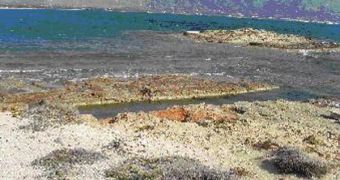The ancient town of Pavlopetri was first discovered in the 1960s, at the southern tip of Greece, near the city of Neapolis. Located only a few meters under the sea floor, it represents one of the few preserved and submerged cities in the world, whose features survived well enough to merit complex archaeological investigations. Currently, University of Nottingham experts are engaged in an effort to map the entire area in 3D, and Nature News had the opportunity to discuss the project with one of its leaders, UN Underwater Archaeologist Jon Henderson.
“The site is submerged in about 3–4 meters of water, and covers an area of about 500 square meters, about 50-60 meters offshore. There are about 15 buildings made up of three or four rooms, some streets, rock-cut tombs and courtyards – and there could be more underneath, because so far there has been no excavation. Some ruins date from at least 2800 BC, but we think the town Pavlopetri itself dates from the Mycenaean period, about 1600–1100 BC,” he told the publication.
The reason why some of the features in the city are so well preserved is because, unlike many ancient cities, it was not hampered with over the centuries. People around the area never took bricks from ancient buildings to construct their own homes, and hundreds of years of agriculture never affected it at all.
However, on account of the relentless action of the waves, the buildings themselves have been eroded down to the sea floor, with only the basic structure of the constructions remaining visible. Features such as doorsteps can also still be identified, which makes archaeologists hopeful that some of the architectural features could be inferred.
“We're using 'scanning sonar,' which has been developed by an offshore engineering company. Their equipment does the same thing a terrestrial laser scanner would do, only using acoustic signals. It can take thousands of points over a couple of minutes and also take photorealistic impressions, so we could produce three-dimensional models using this equipment. Until now, sonar hasn't been able to produce as accurate a survey as terrestrial techniques. But if it does deliver everything it is supposed to, it could completely revolutionize underwater archeology,” Henderson shared.
According to the investigator, the city was submerged with its structures intact, and was not in ruins at the time of the catastrophe. Henderson added that the pottery artifacts seemed to stop at the 1,100 BC threshold, which could mean that the constructions were covered by the sea shortly after. “Also, the depleted oxygen levels in the water and the fact that any remains would be sealed in with sand makes for an anaerobic situation, and that could preserve organic artifacts, such as wooden tools. We'd be very lucky, but the possibility is there,” the expert pinpointed about the team's hopes.

 14 DAY TRIAL //
14 DAY TRIAL //